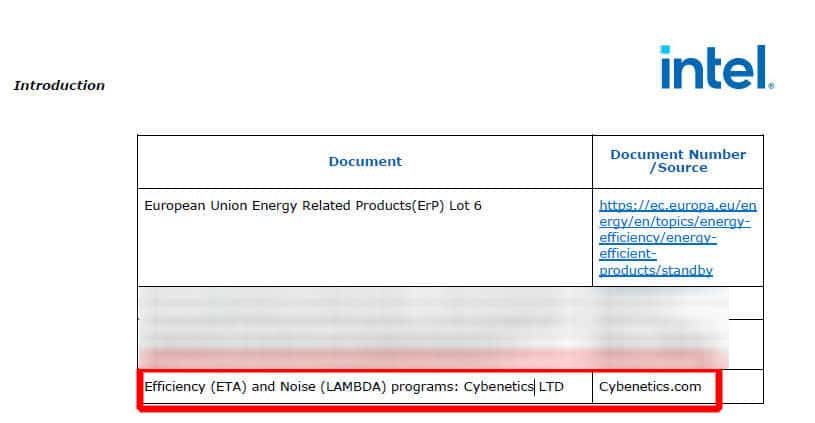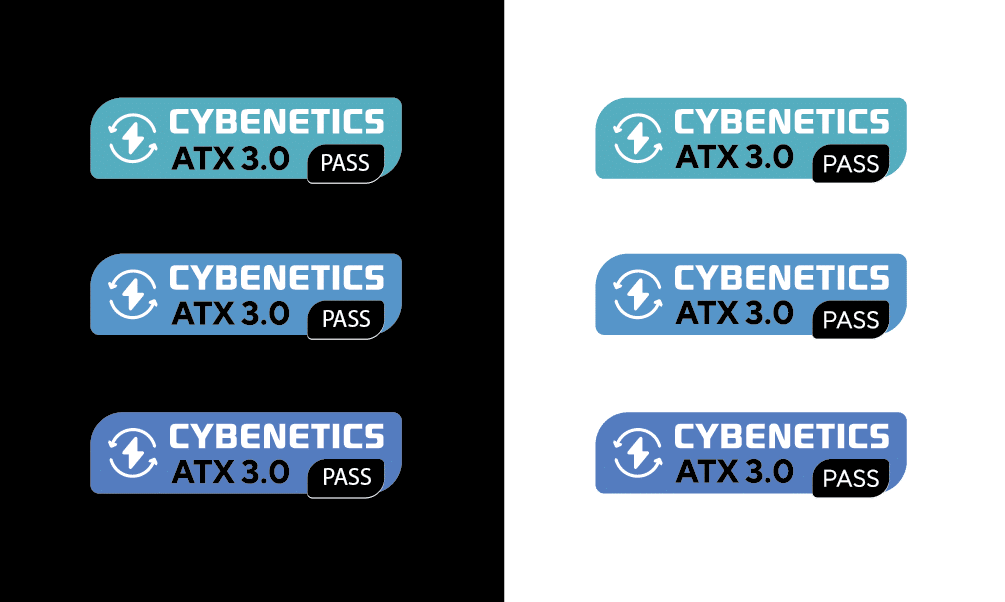ETA Requirements
Now that I have explained how we get our average efficiency readings, you can easily understand the difference between the Cybenetics Test scheme and everything else and why the Cybenetics scheme is superior. Note that we can easily increase the 1450 load combinations to 3000 or even more in the future if we deem this necessary. But rest assured that 1450 load combinations are more than enough.
| Efficiency Levels (115V Input) |
Efficiency (1) (2) | PF (3) | 5VSB Efficiency (1) (3) (4) | Vampire Power (3) |
|---|---|---|---|---|
| DIAMOND | ≥93% overall efficiency | ≥0.985 | >79% | <0.10W |
| TITANIUM | ≥91% & <93% overall efficiency | ≥0.980 | >77% | <0.13W |
| PLATINUM | ≥89% & <91% overall efficiency | ≥0.975 | >76% | <0.16W |
| GOLD | ≥87% & <89% overall efficiency | ≥0.970 | >75% | <0.19W |
| SILVER | ≥85% & <87% overall efficiency | ≥0.960 | >73% | <0.22W |
| BRONZE | ≥82% & <85% overall efficiency | ≥0.950 | >71% | <0.25W |
| Efficiency Levels (230V Input) |
Efficiency (1) (2) | PF (3) | 5VSB Efficiency (1) (3) (4) | Vampire Power (3) |
|---|---|---|---|---|
| DIAMOND | ≥95% overall efficiency | ≥0.950 | >78% | <0.12W |
| TITANIUM | ≥93% & <95% overall efficiency | ≥0.940 | >76% | <0.15W |
| PLATINUM | ≥91% & <93% overall efficiency | ≥0.935 | >75% | <0.18W |
| GOLD | ≥89% & <91% overall efficiency | ≥0.930 | >74% | <0.20W |
| SILVER | ≥87% & <89% overall efficiency | ≥0.920 | >72% | <0.23W |
| BRONZE | ≥84% & <87% overall efficiency | ≥0.910 | >70% | <0.25W |
- If the PSU is close enough to the limits (0.1%), we will ask its manufacturer if it is willing to send a second sample for re-evaluation. If the second sample registers a significant performance difference compared to the first one (>0.5%), we will ask for a third one to verify the test results. Moreover, if the difference with the upper limit is <= 0.05% (e.g., 91.95%), we will round the number to the second digit, and the PSU will be taxed to the higher category.
- We conduct several load tests with 230V input to make sure that the under-evaluation PSUs meet all requirements mentioned in the (EU) No 617/2013 regulation:
a) 85% efficiency at 50% of rated output power;b) 82% efficiency at 20% and 100% of rated output power;c) power factor >= 0.9 at 100% of rated output power.
- If the PSU fails in any of those requirements, it will lose one class and will drop to the lower one (especially for the PF it will drop to the class that meets the corresponding requirements), despite its efficiency performance. The same applies to the requirements listed in the 5VSB efficiency table except for the first test (2013 ErP Lot 6 requirement), where we allow for a 5% deviation (40-45% range) due to the very low applied load and the 0.55 A to 1.5 A load tests where we also allow for the same 5% deviation (70-75% range). In any case, vampire power must be lower than 0.25 W, even with 230 V input.
- The 5VSB rail should also achieve the required efficiency levels listed in the table above to meet various requirements, including the CEC and ErP Lot 6/3 ones. The Power Supply Design Guide for Desktop Platform Form Factors, v.3.0 (February 2022), also lists and recommends those requirements.
| 5VSB Load | Efficiency Target (115V & 230V) | Notes |
|---|---|---|
| 3 Ampere or Full Load | 75% | Recommended |
| 1.50 Ampere | 75% | Required – ASM for CEC & ErP Lot 3 2014 |
| 1.00 Ampere | 75% | Recommended |
| 0.55 Ampere | 75% | Required – ASM for CEC & ErP Lot 3 2014 |
| 90 Milliampere | 55% | Recommended |
| 45 Milliampere | 45% | Required – ErP Lot 6 2013 |
ATX v3.0 and ATX v3.1 Pass Program
Cybenetics is officially recognized by Intel, starting from the ATX v3.0 specification. This is one of the reasons that pushed Cybenetics to run even more tests on each PSU that it certifies, to check if it meets all requirements that the ATX v3.0 and ATX v3.1 specs list, including the transient response tests (or PSU Power Excursions as the ATX spec calls them) which can reach up to 200% of the PSU’s max power, for PSUs that are over 450W or the ones that don’t have the 12+4 pin connector. The transient response tests are only some of the tests that Cybenetics conducts to check for ATX v3.x compliance; others include PSU timings, DC Power Sequence, efficiency at 2% load, inrush currents, load regulation, ripple suppression, turn-on overshoot any more. In general if the PSU doesn’t meet any of the ATX v3.x requirements, it doesn’t get an ATX v3.x Pass badge.







The Cybenetics badges are the first certification that’s honestly useful to me, something I trust. The openness and published data are unmatched in the consumer space (for PSUs at least). I read both this and the older article over at Tom’s now. They both contribute to the latter.
I remember the explanation – kinda endorsement – by your former colleague Igor. I was cautiously sceptical then. Like what, yet another certification programme? Another man in the middle to collect royalties? No. You are providing a genuine service to consumers and customers, I hope the wider industry fully recognizes this too. You’ve long reached the level where I’d ask “is there a way to donate” even if this is a commercial enterprise. Otherwise I wouldn’t have cared enough to read both articles! 😉
Thank you for your kind words! Posts like this give us strength to move on 🙂
Από το thelab?!
Με πηγές πολλά χρόνια πίσω. Διάβαζα τότε τα ποστ (στο worklog?) και το θαύμαζα.
TheLab ναι και δεν μπορώ να θυμηθώ δυστυχώς το πρώτο site που έστειλα άρθρο το 2000.
Hi Aris and team,
As a PC building lover, cybenetics and hwbusters have been a great help for me and other people I have recommended to, especially on your PSU reviews and Fan Case reviews.
I just know this website and channel not long ago. Looking up for a proper, standardized, and comparable data sheet from a 3rd party is not something you can find easily for a PSUs. Since I already dive deep into this hwbusters and cybenetics I’ll try to spread the words to some other community I know.
Thank you!